In this post, I have explored how mental heath is represented in the media.
Some topics explored my be triggering for some readers, please proceed with caution.
Introduction
Mental illness and psychiatric disorders are often inaccurately portrayed in the media. All sources such as; movies, TV, magazines, books, social media and the news, often stereotype these conditions as violent, un-predictable and crime related, unlike the majority of real mental illness cases. This villainous representation in the media has caused a huge stigma to build around these conditions, therefore causing those suffering to feel ashamed, and un-willing to reach out for help. This then causes a further adverse reaction, as mental health cases have risen dramatically as a result of these stigmas.
Often, when a high profile event includes talks of mental health, such as a celebrity suicide, the media will publish an out pour of articles on mental health, detailing information about diagnosis and support. Although this can be helpful it usually only lasts a few weeks, or even days, before a crime or vicious accident is then connected to a mental health disorder – once again portraying those struggling in a villainous and extremely negative light.

Movies
Movies are a perfect example of where mental health representation can go terribly wrong. Don’t get me wrong, movies can portray these disorders brilliantly allowing people from the outside to gain an insight into the realities of certain disorders. For example;
Sideways (2004)

This movie follows a story of two men on a trip through California’s wine country, as a celebration of ‘the last week of freedom’ before one of them is to be married. While the soon to be husband is full of joy and adventure, his friend has been battling depression for a very long time, and is finding it hard to come out of his shell. This movie helps depict both how depression can truly affect those suffering, and also explores how you may be able to help someone you love escape their loop of depression.
Julien Donkey Boy (1999)

This movie is focused on a young man suffering with schizophrenia, and how this disorder is affecting him and those around him. This film is extremely powerful, and effectively represents how the disorder may affect a person, and those around them. It also ensures to touch on all aspects and feelings that may be experienced, from support to neglect, opening the eyes of those who do not suffer this illness.
To the bone (2017)

To the bone, follows the story of a young woman dealing with anorexia nervosa, and her journey to recovery after meeting an unconventional doctor who makes her face her troubles and challenges her to embrace life. This movie is created so cleverly, as it has a fun and lighthearted feel while also carrying an extremely strong message. This is used to explore how this disorder can affect not only the person suffering, but their friends, family and romantic interests.
Brain on fire (2016)
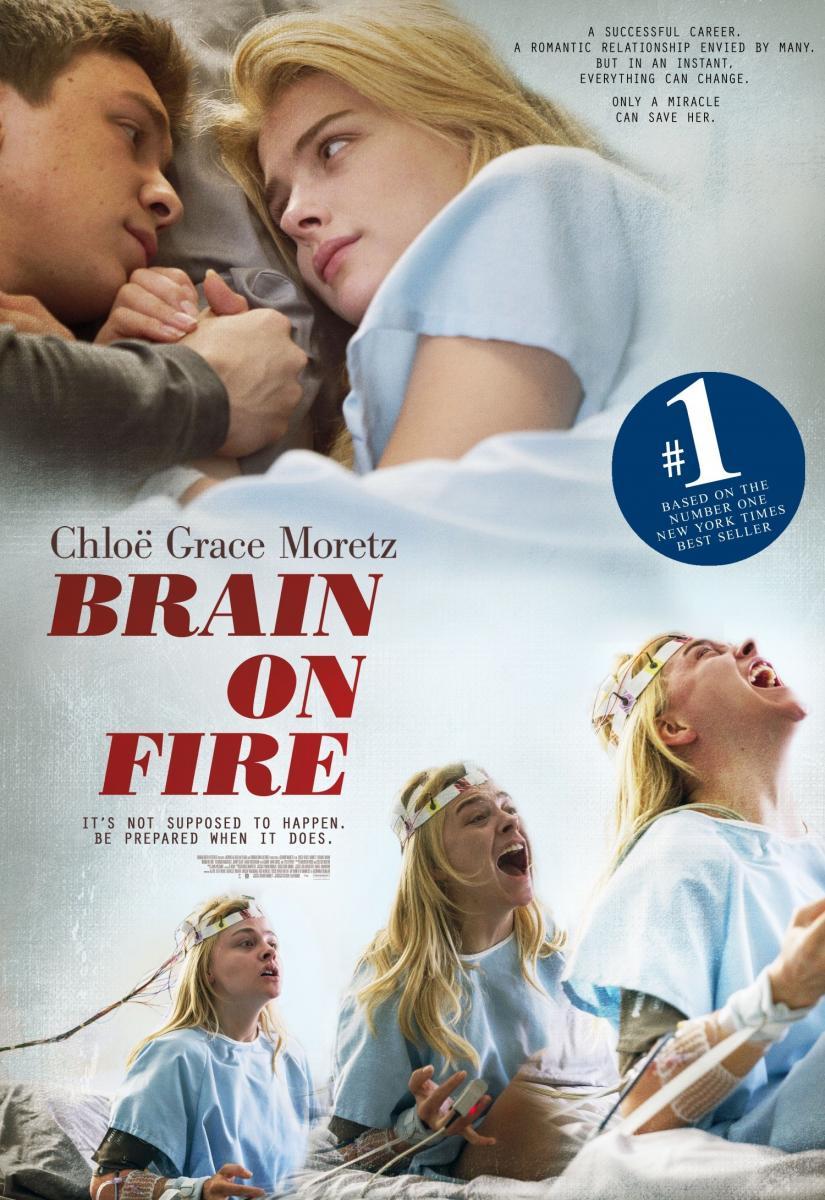
Brain on Fire follows the story of a young woman who has just landed her dream job, then all of a sudden develops uncontrollable erratic behaviors, causing her state to rapidly and continuously regress. This film touches the subjects of misdiagnosis, along with how these disorders can affect one’s ability to carry out everyday tasks. This gives a great insight into the effects of mental health disorders and represents them incredibly well.
A girl like her (2015)

This movie has been created to educate its viewers on the causes and effects of depression, anxiety and suicide. It tells the story of a high school girl bullied by the most popular girl in the school. The victim and her friend decide to set up hidden cameras to capture evidence of the bullying, however they promise not to release this evidence to anyone. After his friend commits suicide, a young boy decides to release the films and expose the bullies in order to hold them accountable for her death. One of the most powerful messages within this movie is the phrase ‘Based on 1000 true stories’. This movie gives a true insight into the minds of bullying victims, and will hopefully have made some people realize the potential consequences of their actions.
Canvas (2006)

Finally, this movie follows the story of a woman diagnosed with schizophrenia, and how her uncontrollable and erratic actions affect those around her, namely her husband and son. The movie touches on causes, effects and treatments for this disorder, while representing it in a true light.
However, many films can also play on the information people are fed through mainstream media, and build villainous, vicious and evil characters, whose actions are often justified with a mental health condition. The films listed below are among some of the films that have completely misrepresented certain illnesses.
Split (2016)

The first example I think of when considering movies that inaccurately depict mental health disorders, is split. This follows the story of three young girls kidnapped by a man diagnosed with split personality disorder, hosting a distinct 23 personalities. The girls are in a mad rush to escape the situation before the rise of a frightful 24th personality, known as the beast. Although this is meant to be a supernatural horror film, the references to these disorders may cause an extremely negative connotation to build around them, and those who suffer. This is because those who do not suffer these illnesses may have distorted perceptions about the realities of the disorder.
Joker (2019)

In a similar case, the movie Joker uses mental health disorders as an excuse, to justify violent and erratic behaviors. The story follows the origins of the infamous villain from the DC Batman comics, the Joker, and his journey of insanity, taking him from stand-up comedian, to Gotham’s clown prince, and leader of the revolution. Although some scenes in this film do accurately depict how one may struggle from certain mental illnesses, the idea that this character used his diagnosis to justify his violent actions is incredibly offensive.
The Visit (2015)

This movie follows the story of two young siblings, on a trip to their grandparents house in order to rekindle a lost relationship. The two siblings become increasingly disturbed by the unusual behavior of their grandparents, before it is revealed the two adults are in fact not their grandparents at all. The story reveals two escaped mental asylum patients have taken the grandparents’ place in a bid to live a life undetected. Although this creates a great story line for a horror film, the fact that schizophrenia and dementia are used to justify the absurd actions that take place in this film are once again extremely insulting to those who actually suffer these illnesses.
Shutter Island (2010)

This movie follows the investigation by two federal agents into the disappearance of a patient who has escaped an institution for the criminally insane. Although in some cases, extremely horrific crimes are related to certain mental health disorders, this film depicts these disorders in a way which makes it seem every criminal has a mental illness, and every person suffering with a mental illness must be criminally insane. Therefore, it can be viewed as extremely offensive and misleading.
The Shining (1980)
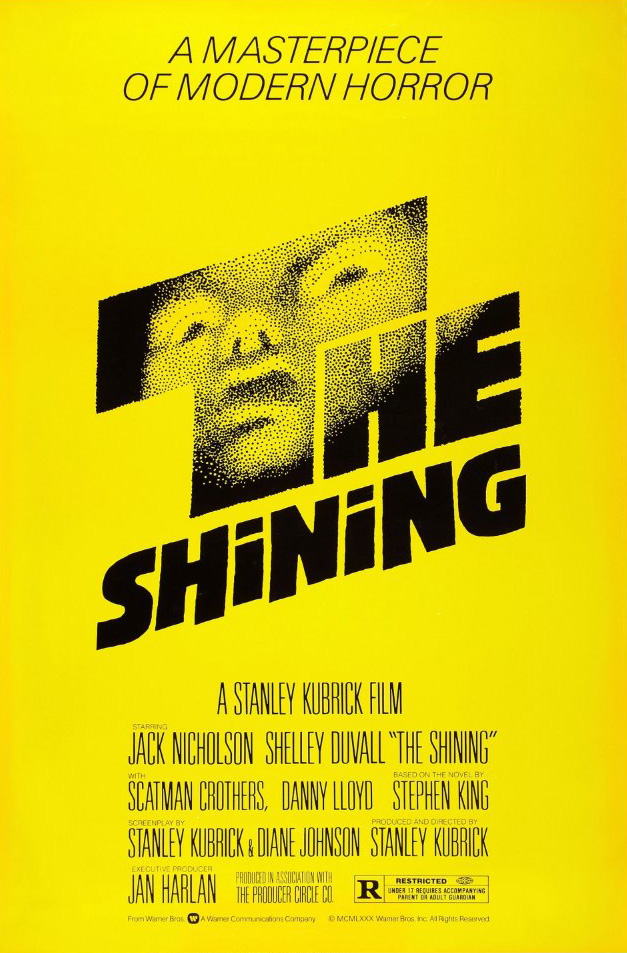
Finally, the shining is another film that mis-represents mental health conditions, by using them as excuses to justify horrific acts of violence. Although this film was created to be a supernatural horror, its use of references to mental health conditions throughout could cause extremely distorted and incorrect views towards people who actually surfer these issues.
TV
As previously mentioned, in more recent years there has seemed to be an out pour of media coverage on topics such as mental health when there is a high profile event , such as a celebrity suicide, that links to this subject. However, since toward the end of 2022, many of the main UK television services have focused largely on this subject.
For example, Channel 4 set up a section on their catch up streaming service, named mental health matters. In this section they have included a range of programs, dramas and documentaries that have been made to raise awareness for these issues. No only have they used their soap drama, Hollyoaks, to bring awareness to multiple issues such as; assault, rape, domestic abuse, addiction, self harm and suicide, but they have also created multiple individual drama series or one off episodes, such as; Consent, its a sin, and I am…, designed to tackle and raise awareness on some of these issues. Furthermore, channel 4 has completed many interviews and documentaries with huge names such as; Katie Price, Dani Dyer, Vicky Paterson, Gemma Collins, Caroline Flack and Davina McCall, to help represent the celebrity life isn’t as perfect as it seems, therefore highlighting the idea that you sound not be constantly jealous of the things you see on social media, as these people suffer too.

Furthemore, ITV created the ITV x Calm campaign, in order to bring light to the realities of mental health disorders, while encouraging people to reach out and help others. They created multiple episodes, detailing stories of life post mental health battles, as well as following stories of those in recovery. This helped to show that there is light at the end of the tunnel, and your life is worth fighting for. They also created a short, to be shown during advertisement time, that presented examples of the signs to pick up on, and gave an example of how to effectively reach out to those you believe are struggling, and offer help. The ad followed the story of a father, concerned about his daughters well being, and pulled at heart strings all across the country.
Additionally, the BBC have followed a similar pattern, using new material, alongside their timeless soap Eastenders, to bring awareness to these situations, how they affect everyone involved, and how to help. They have then furthered this awareness by creating multiple documentaries with stars such as; Emily Attack, Joe Wicks, Horatio Clare and James Arthur, once again highlighting the idea that life in the spotlight is not as easy or glamorous as it may seem on social media. They also have created interviews with everyday people, detailing stories about people overcoming self harm and addiction, again proving things can, and will get better, if you keep fighting. These programs are designed to give hope to those struggling, in a bid to encourage them to stick out their fight, while providing valuable and accurate knowledge to those who do not suffer.

Finally, streaming services such as Netflix and Disney plus also have specifically made programs, designed to teach people how to relax and unwind. This will help many people learn new coping mechanisms and skills, all from the comfort of their home. These shows played an extremely vital role during the COVID-19 Pandemic, when everyone was in isolation.

Overall, although topics such as mental health can be inaccurately portrayed on TV, I believe broadcasters are beginning to take more responsibility for what they release, therefore making the coverage on TV more and more positive.
Social Media
Although social media can be a great and positive place, it can also unlock the darker side of some people, making it a living hell for those affected by online bullying. Before social media, there tended to be one group of bullies in a school or community, picking on everyone else. Although this was hard enough as it was, victims could often go home, unwind and forget about the horrible things that may have been said or done to them throughout the day. However, social media has created a playground for all kinds of people, as not saying these things to a person’s face means you don’t see their instant reaction, often meaning people don’t think twice about the potential consequences of their actions. This also means for victims of bullying, they don’t even get to go home and escape the realities of their day to day life, the name calling, shaming, and picking never, ever stops.
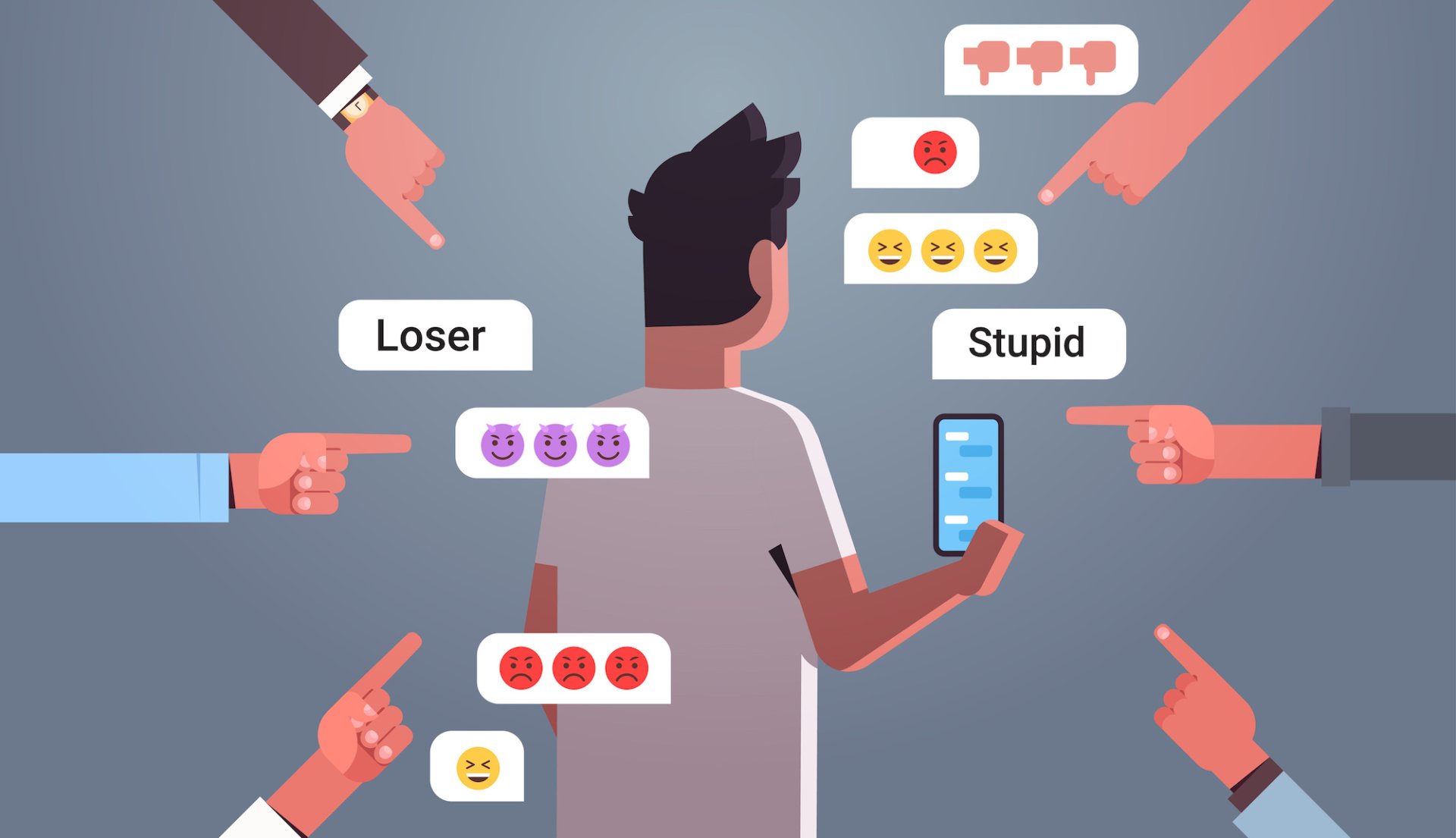
Not only does social media allow people to bully others online, through comments, posts and direct messages, but it also creates a place of self-doubt for many. Almost everyone uses social media as a space to post the good things going on in their lives, a place to forget the negative and share the positive. However, for viewers this may create an environment where certain peoples’ lives are ‘perfect’. As many will not share their struggles on social media too, those viewing their profiles may begin to compare their lives, criticizing themselves for not having those certain shoes, or not being able to travel to that certain place. This can cause a huge feeling of dissatisfaction for life, and an overwhelming fear of missing out.

Additionally, heavy use of social media causes a lack of face to face contact. Although one may not intend to do this, I’m certain almost everyone can agree we are all victims of falling down the rabbit hole of our phones or computers, as scrolling can become addictive. This means taking a few moments out to check your notifications can easily turn into hours of you surfing the pages of people you have never even met, while not speaking a word to your family and friends sitting in exactly the same room as you. This lack of human interaction can, and will often, lead to an extreme feeling of loneliness, which may even be capable of causing, or worsening depression and/or anxiety.

However, in the same sense social media can be a great place. For those who live further away from their family or friends, social media is an easy way to keep up to date with each other. Unlike before social media, when you would write a letter to someone, and may not receive a reply back for two weeks or so, social media allows us to keep in constant contact with those we love, while also getting to see their face and hear their voice, through photos, videos, and facetime calls. This also allows many people to follow their idols in their day to day life, and gain valuable information on how to achieve their future goals.
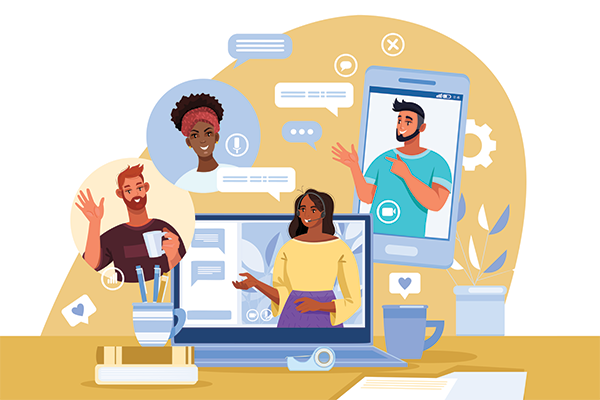
Furthermore, social media is a great place to promote new ideas, and network with others, while supporting and raising awareness to certain causes. These platforms allow us to create and join communities with people who share the same passions and interests as ourselves. Not only could this make a huge positive impact, it also creates a safe space for making friends and meeting new people all across the globe. Therefore, social media may actually be the cure of loneliness for some people, who find it difficult to connect with people in their local communities.
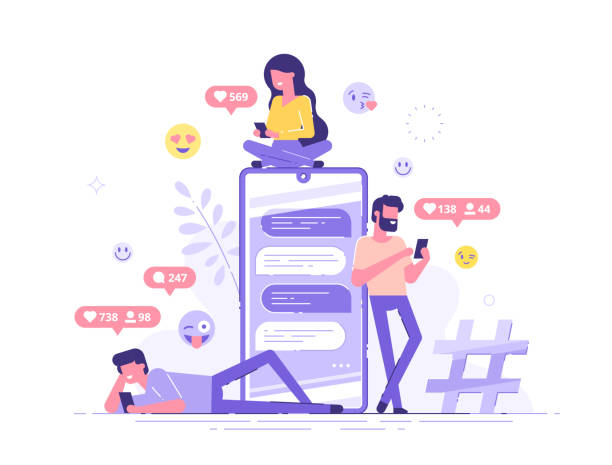
Additionally, these platforms allow people to express their style, creativity and self expression. As just mentioned, this may encourage people to make friends, as well as allowing them a quick and easy way to reach out for help, advice and support. Social media can also be the perfect place for people to discover inspiration, collaborators and information about certain topics, allowing them to further discover things they are passionate about.

Overall, although social media can be hugely positive, I still feel the vast majority of users find this space very negative. In my opinion, social media still has a long way to go before being a safe space for everyone, therefore I believe it is a huge contributor to the mental health pandemic we are facing.
News
Upon looking at the most recent news titles, focused on mental health, I can already see there has been a huge improvement over the past few years. The first few articles I came across were all focused on mental health in a more positive light, exploring recovery, and scientific breakthroughs in the world of treatments and cures. However, it did not take me long to find an article which related a mental health condition to a vicious crime.
Much like the subjects I explored when talking about mental health representation in the movies, news panels often use mental health conditions as a way to justify a person’s inhumane actions of violence. Although these conditions may well be a factor in the cause of these events, news articles are written in such a way that makes it seem the only reason these things happened is purely because the person was suffering from a mental health disorder. This then hugely distorts the view of the public eye, causing a huge taboo around the topic of mental health, and a general fear of those who suffer.

The article I discovered was titled ‘woman discharged from mental health care months before decapitating mum’. Upon reading this, I can almost certainly tell you most people would immediately think this act was completed, solely due to the woman’s mental health disorder. This article told the story of a woman, Odessa Carey, who brutally murdered her 73 year old mother, just months after being discharged from her community mental health care team, in 2019. During the inquest, a court heard that a review of Odessa’s care found multiple agencies had’ failed to recognise the danger posed by Carey’.
When further reading this article, you learn one of Odessa’s mental health workers had reported “some delusional content to conversation” during her visits to their home, where Odessa would regularly speak upon her beliefs that the woman that she lived with was not actually her real mother, rather someone posing to be her. She also reportedly stated beliefs this imposer was allowing people into the home to steal her belongings. Additionally, it was revealed Carey was known for abusing recreational drugs such as cannabis, therefore heightening her risk of deterioration of her mental health.
Toward the end of the article, the idea that referral to a drug or alcohol abuse rehabilitation service could have prevented this incident was explored. Although this helps to highlight the idea that Carey’s mental health condition was only one of many factors that may have influenced her decision, it is important to note not many people will actually ready a full news article. More often than not, people use an article’s title as their sole news source, meaning they would have believed the horrific accident had happened purely because this young woman was battling with a mental heath disorder.
This is a perfect example of the negativity shown towards mental health within the news media coverage. Overall, I believe the news is one of the worst outlets for providing inaccurate depictions of those struggling with mental health disorders, and distorting the public’s view.
:max_bytes(150000):strip_icc()/iStock-161935587-59f2406f0d327a0010fb39f5.jpg)

This article provides a comprehensive exploration of how mental health is represented in various forms of media. It offers a balanced view of both positive and negative portrayals, as well as the effects they can have on individuals and society. There is a clear message that media outlets are starting to take more responsibility in their portrayal of mental health, but there is still a long way to go, especially in the news media.
founder of balance thy life https://balancethylife.com
LikeLiked by 1 person